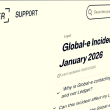Did you know that over 80% of web applications fail due to poor planning and execution? Now imagine a framework that can simplify the development process for you. We’re talking about Yii Framework (Yii2), a powerful tool designed to make web development easier and more efficient, especially for beginners and startups. The Yii Framework is used by thousands of already experienced developers around the world to build, maintain, and scale their web applications.
Successful examples of Yii Framework developments include products from companies such as SkillShare (an American online learning platform), iRobot (the company behind the popular Roomba vacuum cleaners uses this web platform for its iRobot Select membership website), HumHub (an open-source social networking software), Kia Corporation, and Serta (the last uses Yii for some of its web apps).
We have chosen these names with web development beginners in mind, who often find it difficult to choose the right tool to create their first web products. In this article, we will show you, as an inspiration and example, how easy it is to create your first web application using Yii Framework, a simple yet powerful tool for beginners. Here we go!
Understanding the Basics of the Yii Framework
The market offers a wide range of frameworks for developing various web applications and systems. The most popular ones are Laravel (known for its elegant syntax and robust features), Symfony (highly regarded for its flexibility and reusable components) and CodeIgniter (a lightweight PHP framework). Therefore, the first problem newcomers face is choosing an effective framework to start developing with.
How to decide on one that will help you get results quickly?
For reference, research (studying documentation, forums and tutorials), comparisons and experiments when selecting a framework for a web application take beginners from one to three months. But it turns out that this can be avoided. Using the Yii Framework as an example, here are the selection criteria that will help you choose your first web framework faster:
- Ease of learning: Yii has detailed documentation and built-in tools, making it a great choice for beginners. Unlike Symfony or Laravel, Yii offers a smoother learning curve.
- Speed of development: With built-in tools like Gii (code generator), Yii speeds up application creation, which is especially important for startups and small projects.
- Security: Yii offers built-in defences against SQL injection, XSS attacks, and CSRF, making it a safe choice for building applications.
- Scalability: This framework also supports modularity, making it easy to expand the application as your business grows.
- Performance: Yii2 is known for its speed and efficiency, making it a great solution for applications with high-performance requirements.
Draw your conclusion. If you’re new to startup development, choose a tool that’s simple, fast, and scalable. The DEV Community lists the 30 best web development frameworks, including React.js, Angular, Vue.js, Django, and others. But keep in mind that Yii is the Swiss Army knife for web development. It has everything you need to get started, according to SECL Group experts.
Step-by-Step Guide to Building Your First Web Application with Yii Framework
It can be difficult for beginners to start web development without a clear plan. In general, a plan includes installing the Yii framework, setting up the environment, and building a basic application. But because a web product requires different approaches to documentation, licensing, and security, the following step-by-step guide will help you navigate the different approaches and avoid common mistakes.
The unified template below can be adapted to create different types of applications (e-commerce, online learning, drone control, social media) based on any Model-View-Controller (MVC) by following the same steps.
Step 1: Install Yii Framework
Use the command to set it up:
- Code: composer create-project –prefer-dist yiisoft/yii2-app-basic
- Example code de-commerce: composer create-project –prefer-dist yiisoft/yii2-app-basic ecommerce
- For online learning: composer create-project –prefer-dist yiisoft/yii2-app-basic online-learning
Step 2: Set Up the Database
- Create a database and configure the connection in a file config/db.php. Here – specify the connection parameters.
Tasks:
- Create a database for the application.
- Specify connection parameters in the configuration (host, dbname, username, password).
Note
At this point, beginners should make sure that a DBMS (such as MySQL) is installed to create the new database. Also, check the connection before starting the migration. In context: if errors occur, check the log files — make sure the database server is running.
Step 3: Create Models
- Generating models for the main entities of the system. Depending on the application type, use the following commands:
Sample code for e-commerce:
- ./yii gii/model –tableName=product –modelClass=Product
- ./yii gii/model –tableName=category –modelClass=Category
- ./yii gii/model –tableName=order –modelClass=Order
Example for online learning:
- ./yii gii/model –tableName=course –modelClass=Course
- ./yii gii/model –tableName=user –modelClass=User
- ./yii gii/model –tableName=enrollment –modelClass=Enrollment
Note to beginners
At this step, it is important to define the main entities (e.g. products, categories, orders for e-commerce), create models using Gii, customize models and strictly follow validation rules; the latter ensures data integrity.
Step 4: Generate CRUD Operations
- Generate create, read, update, and delete (CRUD) operations for each model.
- Code: ./yii gii/crud –modelClass=app\models\<ModelClass>
E-commerce example:
- ./yii gii/crud –modelClass=app\models\Product
- ./yii gii/crud –modelClass=app\models\Category
- ./yii gii/crud –modelClass=app\models\Order
Example for controlling drones:
- ./yii gii/crud –modelClass=app\models\Drone
- ./yii gii/crud –modelClass=app\models\Flight
- ./yii gii/crud –modelClass=app\models\User
Step 5: Customize Views and Controllers
- Modify automatically generated views and controllers to adapt them to your application’s business logic.
Example:
- For e-commerce: add logic for displaying products by category, adding products to the cart.
- For online learning: configure the display of courses, registration of students for courses.
Step 6: Implement Additional Features
- Add specific features depending on the type of application.
- E-commerce:
Integration of payment systems (PayPal, Stripe), ensuring data security (SSL, authentication). - Drone Control:
Implementation of real-time tracking, integration of maps and GPS. - Social media:
Adding user profiles, messaging systems, friend requests.
- E-commerce:
Step 7: Test and Deploy
- Check the functionality of the application and deploy it on the server. Enable functional tests, test user interface and system performance.
- Testing: Make sure all functions are working correctly.
- Deploy: Deploy the application on your chosen hosting (for example, VPS or cloud platforms).
But more than just a how-to guide, this step-by-step tutorial is an inspiration. With Yii2, you can launch your first application in just a few steps, thanks to built-in tools and ready-made templates. It’s about how Yii provides a ready-made framework for a quick start: It is a code generator that automates the creation of code, databases, and more. Get started with “The Definitive Guide to Yii 2.0.”
Optimizing and Scaling Your Yii Application
Even before they realize the value of building their first Yii application, optimistic newcomers worry about its ability to scale as their business grows. Remember: This web development platform is built for scalable applications, so you can easily add new features as your project or technical needs grow. This feature makes it possible to use the Yii2 to develop small websites as well as large enterprise systems.
For the more advanced ones, here’s a list of essential monitoring and profiling tools that can help you track the performance of your Yii application to ensure it scales seamlessly:
- New Relic: APM, real-time performance monitoring.
- Blackfire: PHP code profiling, tuning.
- Xdebug: Code-level debugging and profiling.
- Prometheus + Grafana: Collect and visualize real-time metrics.
- Sentry: Error and exception monitoring.
- Elastic APM: Request tracing and performance monitoring.
- Tideways: Profiling and performance metrics.
- Datadog: Comprehensive infrastructure and application monitoring.
- PHP-FPM Status Page: PHP process health monitoring.
- AppDynamics: Full stack monitoring and business metrics.
Bottom line
The Yii Framework is a powerful tool for building your first web applications. Simplicity, built-in tools, and scalable projects are its strengths. Community support and extensive documentation make this framework accessible to learn and use, even if you are just starting your web development journey.
Answers to common objections:
- “Code generators limit flexibility” — Yii2 makes it easy to manually customize the generated code.
- “I’m not sure I can scale a project on Yii” — Yii2 supports scaling with minimal effort.
Follow the suggested step-by-step guide and build your first web application on Yii Framework today!









